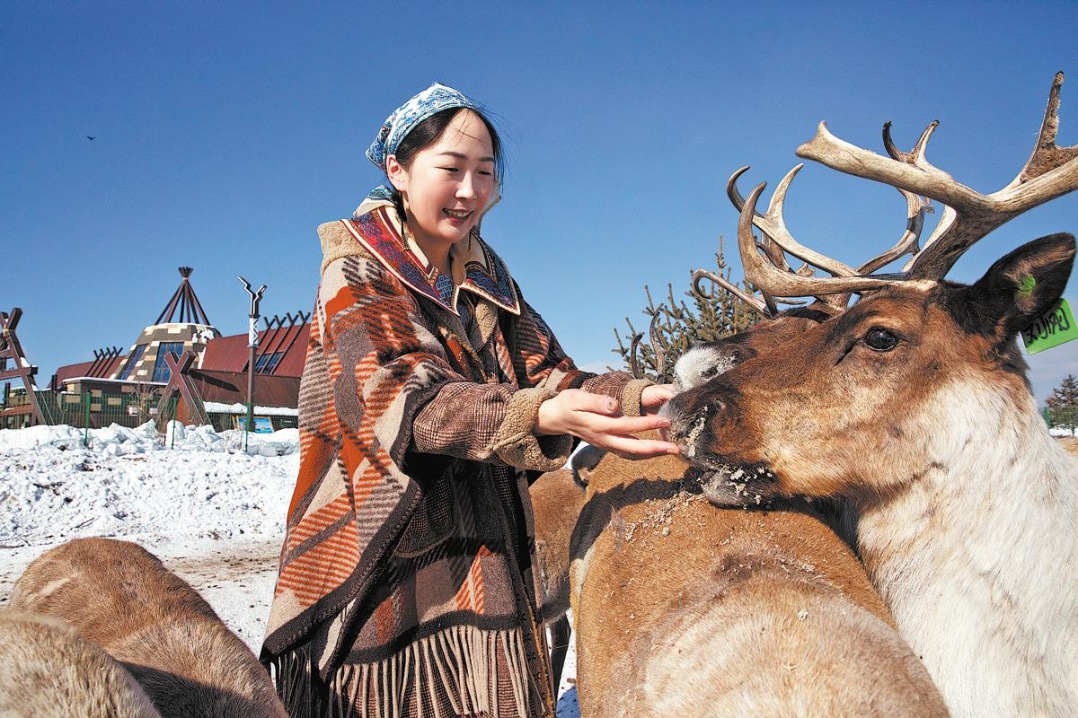Low-wage bottleneck
By LI TIE | China Daily | Updated: 2020-05-26 07:44

Biggest problem facing China is the huge imbalance in its income distribution which constrains the release of consumption and investment
Although China has a large population, it faces a bottleneck in stimulating consumption and investment as the vast majority of the population is low-and medium-income earners.
The upper middle-income population in China is only 400 million while another billion belong to lower middle-income earners. The huge imbalance in income distribution seriously affects the release of consumption and investment potential. That is why the central government has put forward the strategic requirement of expanding the middle-income group.
Many think that a crisis in China's population growth may emerge. This view is based on two inferences: First, China's population growth rate will slow significantly, which will mean a smaller labor pool in the future and lead to the rise of labor costs and thus the transfer of China's industries to foreign countries. Second, the other is that more births are needed to lower the proportion of the elderly population, as the aging of China's population is accelerating.
These views still lag behind the reality of China's future economic growth prospects. In the first 20 to 30 years of the reform and opening-up, China developed into the "world's factory" through the low-cost of its labor and various production factors. That is a process China had to go through. However, that rapid development driven by low costs led to environmental damage and ecological deterioration.
China is no longer the world's factory backed by low-cost factors. It has entered an era of technological and manufacturing upgrading, and there is a general trend to reduce the demand for industrial labor in the future. Even though investment in the construction of infrastructure is increasing, the replacement of labor by technology and capital is a common phenomenon. It is not like the historical period decades ago when mass production was carried out by human workers.
There are truly factors of rising labor costs if industrial spillover is analyzed simply from the perspective of cost. However, from the perspective of the integrity of the global industrial chain, the irreplaceable nature of the Chinese industry lies in its forming of complete industrial chains, which will further complement the industrial transfer of some low-cost factors.
In other words, actively transferring some industries with low-cost factors will play a greater role in China's comparative advantage, and lay a better foundation for the country's technological improvement and innovation ability. These high-quality industries are also related to the all-round requirements of China's emergence as an upper middle-income country. For example, the demand for quality improvement of people's lives, the demand for a healthy ecology and environment, and the demand for public services such as education and medical resources.
This leads to the basic judgment that China's labor supply will face a long-term surplus, rather than a shortage of supply. Urban employment has been under pressure but the employment of rural migrant workers in urban areas is not taken into account.
Many people don't know the situation of rural employment in China. At present, the cultivated area per household in China is less than 10 mu (0.67 hectares). There is a gap when it is compared with Japan (about 33 mu) and South Korea (about 23.3 mu). The low rates of cultivated land per capita and per household seriously affect the promotion of agricultural mechanization and moderate expansion of operation. The shortage of cultivated land per household compared to that in Japan and South Korea means that there is at least 200 million surplus rural labor force in China when the permanent residents population is taken into account. In the future, only by fully solving employment of the rural labor force in nonagricultural sectors can China lay a foundation for its rural revitalization.
As for China's aging population, Western developed countries have not provided better solutions. China can completely avoid the path that developed countries chose. By reconstructing the moral system for taking good care of the elderly, which is a fine tradition of Chinese civilization, home-based care can be encouraged. It can delay the retirement age. The working elderly in Japan are exempted from tax. The elderly can also be encouraged to engage in domestic services, undertake part of their children's labor, and form a new family-based employment model through the family support plan. The government can formulate policies to require the children of the elderly who are engaged in family services to provide necessary pension funds. It can also support elderly nursing by improving innovation and technology and creating more benefits. And promote employment by developing the eldercare industry and stimulating the consumption of the elderly population.
The development path and institutions that a country chooses should be based on its actual situation. In the development stage of China at that time of the launch of reform and opening-up, it was wise to strictly restrict the birth rate. But the policy should be adjusted in time according to the changes in the situation. For example, China can consider relaxing or even canceling the family planning policy due to the significant decline in fertility rate. But policymaking should not go to extremes to encourage childbirth.
At present, China needs to improve the quality and structure of its population. To achieve the goal, emphasis should be laid on enhancing public services through various policies, or to encourage exodus of rural people to cities through urbanization, and then take advantage of a sound urban public service system to improve the quality of population, boost the employment and technical ability of the labor force, and raise the new population's educational background, rather than to adopt a backward approach of encouraging more child births, which does not meet the overall requirements of improving the quality of economic and social development in the future.
The author is chief economist with the China Center for Urban Development, and a research fellow with Atom Think-tank of Tencent. The views do not necessarily reflect those of China Daily.
























